45.
After getting feedback at the Unfinished Projects at Bitter End’s Harvest Feast, I made a new attempt and entered it in the Apprentices Competition at Samhain. As I am not an apprentice I asked Mistress Maiosara to sponsor me and she graciously did. Because this post is so long, there’s also a short version.
- various shapes and moulds
- I made a lot, this was only 2/3 of it
- close up of the display
- close up of the display
- My display
- I even had enough to package up for the Fines Lames bountiful chests
There’s quite a history of sugar paste (modernly called gum paste), with recipes in English going back to at least 1558 when Alessio’s Secreti (1555) was translated into English. Recipes originating in English start appearing in 1567.
Most of the recipes for sugar paste come out after the 1590s. This is both because of an increase in the number of cookery books but may also reflect the increased accessibility and decreased cost of two of the key ingredients (gum tragacanth and sugar) due to the signing of the Anglo-Ottoman commercial treaty in the late 1580s and the creation of the Levant Company, an English trading company focused on trade with the Ottoman Empire (Amatullah 2015). Although sugar was being grown by several nations at this time, including several European countries, the sugar from the Ottoman Empire was considered to be the best quality along with that produced by the Portuguese (Roufs and Roufs 2014, 112).
Original Recipes
Alessio’s work was retranslated and republished many times. Although there are references to it appearing as early as 1558 (source) the earliest version I’ve been able to find is the one translated by Wyllyam Warde from French to English in 1559 entitled “The Secretes of the Reverende Mayster Alexis of Piemovnt”. Alessio’s Secreti is primarily a book of various medical remedies with a number of perfumes, soap, and laundry “soap” recipes included. It’s in the Third book that the confectionary recipes appear. Here is the recipe shown from both the 1559 edition and the 1595 edition (The recipe is much clearer by examining both versions so as to see the various spellings of each word and be able to translate it more appropriately):
| 1559 | 1595 |
| TO make a paste of sugre, whereof a man maye make all maner of fruites, and other fyne thynges, with theyr forme, as platters, dyshes, glasses, cuppes and such lyke thinges, wherewith you may furnishe a table: and when you haue doen, eat them up. A pleasaunte thing for them that sit at the table.
Take Gomme dragante, as muche as you wylle, and stiepe it in Rose water, untyll it be mollifyed. And for foure onces of sugre, take of it the bignes of a Bean, the juyce of Lemons a walnut shell full, and a little of the whyte of an egge: but you muste firste take the gomme, and beate it so muche wyth a pestel in a morter of whyte marble, or of brasse untyll it become lyke water, thenne putte to it the juyce wyth the whyte of the egge incorporatynge welle all together. Thys dooen, take fowre ounces of fyne whyte sugre, welle beaten to poulder, and cast it into the morter by lytle and lytle, untyll all bee tourned into the forme of paste. Than take it oute of the sayde morter, and braye it uppon the poulder of sugre, as it were meale or flowre, untyll all be lyke softe paste, to the ende you maye tourne it and facton it whyche waye you wylle. Whanne you haue broughte youre paste to thys sorme, spreade it abroade with Synamom, uppon greate or smalle leaues, as you shall thynke it good: and lo you shall forme and make what thynges you wylle, as is aforesayde. Wyth such fyne knackes as may serue a table, takynge heede that there salld no hote thynge nygh unto it. At the ende of the bailkette they may ease all, and breake the platters, dyshes, glassses cuppes, and all thynges: for thys paste is verye delycate and sauourous. If you wylle make a thynge of moore finesse thanne thys, make a tarte of Almondes Stampped wyth sugre, and rse water, of lyke sorte that marchepaines be made of. Thys shall you lay betwene twoo pastes of suche bessclles or fruites, or somme other thynge as you thinke good. (Alessio 1559, 64b-65a) |
To make a paiste of Suger, whereof a manne maie make all maner of fruites, and other fine thinges with their forme, as Platters , Dishes, Glasses, Cupps, and fuche like thinges, wherewith you maie furnishe a table: and when you haue doen, eate them vp. A pleasaunte thing for them that sitte at the table,
Take gumme Dragant as much as you will, and steepe it in rose water,untill it bee mollffied. And for sower briecs of suger take of it the bignell of a bean,the juice of Lemons a Wallnut shell full, and a little of hte white of anne egge: but you must first take the gum, and beate it so much till it become like water, then putte to it the juice, with the white of the Egge incorporated well together. This doen take fower onces of fine white suger well beaten to powder, and cast into the morter by little and little, untill all be tourned into the form of past. Then take it out of the saied morter, and braie it upon the powder of Suger, as it were meale of flowre, untill all bee soft paiste, to the ende you maie torne it and fashion it, which way you wil. When you haue brought your paiste to this forme, spreade it abroade with sinamon upon greate or small leaues, as you shall think it good, and so shall you forme, and make what things you will, as is aforesaid; with such fine knackes as maie serue a table, taking heede that there stande no hot thing nigh unto it. At the end of the banket, they maie eate all, & breake the platters, dishes, cuppes, and all things; for this paiste is verie delicate and sauourous. If you will make a think of more finesse thn this, make a tarte of Almondes, stamped with suger and rose water, of like forte that Marchpaines, bee made of. This shall you laie beetweene twoo pastes of such bellelles, or fruitse or some other thing as you thinke good. (Alessio 1595, 61b-62a)
|
The only substantial difference between the two is that the later recipe has you mix the egg white and lemon juice together first before adding it to the steeped gum. With the little difference between the two editions, published 36 years apart, and given how prevalent Alessio’s writing was, with at least four English editions before 1600, it stands to reason that this method of making sugar paste was well known for at least the last half of the 16th century. Making a sugar paste out of gum dragon (modernly, and hereafter, called tragacanth), liquid, lemon juice, and egg white is still a method of making gum paste today (Fantes Kitchen Shop 2015) and is used similarly for making objects out of gum paste.
The earliest English based recipe for sugar paste comes in 1567 from “The commonplace book of Countess Katherine Seymour Hertford” (University of Pennsylvania Ms. Codex 823) where it’s listed as a gingerbread recipe:
To make Gynger breade
Take gome dragonett & laye ytt in water three
dayes then stampe ytt in a morter wt sugar
so longe till it be so styffe that you maye
moulde ytt then take almons & blaunche them
and beate them smalle & when they arre very
fyne put them into the morter wt gome deagonet
& sugar & stampe yt to gether a lytle, then take
it & moulde yt, & roole yt wt a roolelynge pyne
then ley it upon your mouldes & take a lytle
sugar & rose water & styre it together then
wt a fether laye it upon the gingerbread &
set the gingerbreade a lytle in an oven & so
kepe it for your use . (Hertford 1567, 31v)
Although it calls itself a gingerbread recipe it’s a recipe for sweets (During the 16th century gingerbread could refer to either a cake made of bread, honey, ginger, and other spices, or in general to a confection (Baret 1574, 325) ). Mixing gum dragon with water and sugar creates a sugar paste. The second part of the recipe describes making a sugar paste with almonds, very similar to a Marchpane, after which a quick sugar syrup is brushed on top, then the whole thing is dried making a two-layer sugar confection. This recipe gives us a more basic sugar paste than was given by Alessio, and one that is very effective at creating simple shapes via moulds or creating basic sweetmeats.
In 1591 a similar recipe appears in “A Book of Cookrye”, by A. W. The recipe is again refered to as gingerbread but this time it’s specifically called a “white ginger bread”
To make white Ginger bread.
Take Gumma Dragagantis half an once, and steep it in rosewater two daies, then put therto a pound of Sugar beaten & finely serced, and beate them well together, so that it may be wrought like paste, then role it then into two Cakes, then take a fewe Jordain almonds & blaunch them in colde water, then dry them with a faire Cloth, and stampe them in a morter very finelye, adding therto a little rosewater, beat finely also the whitest Sugar you can get and searce it. Then take Ginger, pare it and beat it very small and serce it, then put in sugar to the almonds & beat them togither very well, then take it out and work it at your pleasure, then lay it even upon one of your cakes, and cover it with an other and when you put it in the molde, strewe fine ginger both above and beneath, if you have not great store of Sugar, then take Rice and beat it small and serce it, and put it into the Morter and beat them altogither. (A.W. 1591, 37b-38a)
This version of the confection has the same basic sugar paste as the previous writer, a generation earlier, but now it’s being used to create a sugar casing around a ginger-marzipan filling.
Shortly after the “A Book of Cookrye” version is this version from “The second part of the good hus-wiues iewell”:
To make a paste of Suger, where of a man may make al manner of fruits, and other fine thinges with their forme, as Plates, Dishes, Cuppes and such like thinges, where with you may furnish a Table.
TAke Gumme and dragant asmuch as you wil, and steep it in Rosewater til it be mollified, and for foure ounces of su∣ger take of it the bignes of a beane, the iuyce of Lemons, a walnut shet ful, and a little of the white of an eg. But you must first take the gumme, and beat it so much with a postell in a brasen morter, till it be come like water, then put to it the iuyce with the white of an egge, incorporating al these wel together, this don take foure ounces of fine white suger well beaten to powder, and cast it into ye morter by a litle and little, vntil they be turned into ye form of paste, thē take it out of the said morter, and bray it vpon the powder of suger, as it were meale or flower, vntill it be like soft paste, to the end you may turn it, and fashionit which way you wil. When you haue brought your paste to this fourme spread it abroad vpō great or smal leaues as you shall thinke it good, and so shal you form or make what things you wil, as is aforesaid, with such fine knackes as may serue a Table taking heede there stand no hotte thing nigh it. At the ende of the Banket they may eat all, and breake the Platters Dishes, Glasses, Cuppes, and all other things, for this paste is very de∣licate and sauerous. If you will make a thing of more finenesse then this: make a Tarte of Almondes stamped with suger and Rose water of like sorte that March∣paines be made of, this shall you laye be∣tween two pastes of such vessels or fruits or some other things as you thinke good. (Dawson 1597, 39-40)
The recipe is a virtual replication of the Alessio version that was in wide distribution in England, but this is the first time it was in a book which was primarily for cooks rather than aimed at physicians and appothocaries.
In the early 17th century there are several adaptations on the basic sugar, gum tragacanth, rosewater sugar paste mostly revolving around adding colour or flavour to the paste. Interestingly enough they all take the route of the paste that’s found in the gingerbread recipe instead of the Alessio recipe. “A Closet for Ladies and Gentlewomen” includes eight versions, but they are all based on this one:
To make Past Royall white.
TAke a pound of refined suger beaten and searsed, and put into an Alabaster morter, with an ounce of Gum-tragacant, steeped in Rose water, and if you see your Past bee too weake, put in more suger, if too drie, more gumme, with a droppe or two of oyle of Cynamon, so that you neuer deceiue your selfe to stand vpon quantities, beat it into perfect Past, and then you may print it with your moulds, and when it is drie, guild it, and so keepe them. (Holloway 1608, 38-39)
The other seven versions include ones the colour of corall (rose hips), flavoured with ginger, cinnamon, violets, gooseberries, or musk, hollow ones in the shape of walnuts with other treats inside, and even one with sugar paste on top of a cookie designed to look like a small loaf of bread. All of these are designed specifically for feasts, being a “very fine banqueting conceit” (Holloway 1608, 45).
The basic sugar paste is also used prominently in the French book “Ouverture de Cuisine”:
To make sugar paste.
Take fine sugar well sifted with a fine sieve, then take gum tragacanth well tempered with rose water passed through a strainer as thick as you want it to pass, then put your gum into a mortar of copper or other & stamp well your gum, and put therein a little of the sugar until you make a workable paste. Note that the more it is beaten the more white it will be: of this paste you can form that which you want, like to make in hollow molds, or trenchers, or plates or cups that you want, & put it into an oven that is not too hot, you can make it as gilded or as strong as you want to have: watch well that the oven is no longer so hot that it makes the paste raise into bubbles, that would not be like anything, because it is necessary that the paste remains firm. (Casteau 1604)
This recipe goes on to be used in several other recipes in the book, but it’s important to see that this paste is just as common as the one from Alessio. The same recipe comes up again in an anonymous cookery book from the early 17c: V.a.19 Folger Shakespeare Library (MS ADD 107) which includes a great deal of information about how to colour the sugar paste. The book itself is a receipt book (a blank book that you would use to record things that were important to the household), but unfortunately there is no name or date attached.
To make a sugar plate
Take gum dragon & steep it in rosewater and right then make your mortar very hot & pack your sugar therin then put in your gum dragon all together & poate them togeather till they come to a paste then take it out & print it in moulds if you please you may make of sundry colours if you would beut[?] green you must beate amongst it a little juice of spinnage & if red the juice of a eight red islliflowers, if blou the juice of burrage, or buglas flowers. if purple the juice of purple illiflowers: if yeallow the juice of marygold flowers, if a pincke coulor, the juice of pinks: or if you have not enough of any of them, you may beate the flowers themselves cleane picked amongst it; you may make of other colors, if you can get other colored flowers or leaves, if you please you maye make very daintye cakes of all these flowers togeather; you must take of every color a prettye long peice rowled out finely then lay one piece even with another, one a top of the other till you have laide a peice of every color, then still as you laye one upon another wett them with a little gum dragon steept in rosewater to make them stick close together; then take one of the fre ends & ronle it up very hard, and cloase to the other end, then cut them in round cakes, & they will be of very fine coulers, then laye them to drye on papers, you maye print them if you pleas, but those kinds are better without printing. (17th C59-60)
In addition to giving very clear instructions on how to colour the paste, this recipe also gives us a multicoloured spiral version which was not intended to mimic anything but simply be a dessert.
Sugar Paste:
Based on these recipes the instructions don’t change much over the 70+ years represented. There is the basic version where you steep gum dragon, also called tragacanth, in rosewater (usually overnight) and then mix it in a mortar with your sugar until it becomes a paste, put it into your molds and dry them. The other common version is the Alessio version where you also add some lemon juice and egg white. In practice this creates something very like fondant, and can be used for decorations or, with flavourings added, for sweetmeats.
Colours:
The general idea from the original sources is to replace some of the rosewater with juice from various plants. You can make the juice by dicing the plant and boiling it in two cups water one cup diced plant then straining it. The resulting liquid should be reduced to one cup or less.
- Green: spinach
- Red: red carnations (called illiflowers in original – above – but they mean gilliflowers)
- Blue: Borage (called burrage & buglas in original, they are the same plant also called starflower)
- Purple: purple carnations
- Yellow: marygold flowers
- Pink: Pink flowers
- Coral: rose hips (called eglantine berries in original)
There are also, in the 17th century version, instructions on making a multi coloured “pinwheel” version. Roll out your coloured sugar paste thin and layer them with a bit of gum dragon/water mixture, then roll it up tight. Cut slices off of it and dry them without using a mold.
- Marigold flowers courtesy of Master Thorvald
- Diced and ready
- boil them down for a while, then strain the flowers out and boil some more
Flavours:
Contrasting with the colouring flavours are added to the sugar instead of the rosewater.
- Violet: grind violets in a mortar and strain the juice, mix with sugar until absorbed, dry
- Gooseberry: boil down the juice from the berries until you have a syrup, mix with sugar until absorbed, dry
- Spices: grind spices (cinnamon, ginger, or 1-2 grains musk) with sugar
Because I mainly make this with powdered sugar I’ve found mixing finely ground spices in with my sugar works well. I haven’t tried the violet or gooseberry yet. Another option given in the sources is to use a few drops of cinnamon oil, this works great and is good for those who don’t like the taste of rosewater as it overpowers most of it.
Shapes:
The source texts I used for this gave some suggestions for shapes of the sugar paste, which are mostly suggestions of things you can counterfeit such as plates, dishes, cups, glasses and platters, but they also mention walnuts and small loaves of bread or buns. To add to this I examined still life paintings from the early 17th century to identify possible sugar paste confections, or sweetmeats. Because I’m looking at art it is of course quite possible that my assessment is incorrect.
I examined several paintings by Georg Flegel (Still Life with Bread and Confectionery, Still Life with Fruit Carnations and a Mouse, Still Life with Parrot 1, Still Life with Parrot 2), in Frankfurt, Osias Beert (Still Life with Four dishes and Glasses of Wine 1,Still Life with Four dishes and Glasses of Wine 2, Three Dishes of Sweetmeats and Chestnuts with Three Glasses on a Table), in Antwerp, and Floris Van Dyck (Dutch banquet with cheese, bread, nuts and fruit), in Haarlem. I haven’t been able to find any appropriate paintings depicting confections from England, but these three artists were, at least, from a region and time where exchange with England would have been common, especially as they were mostly painted during the Twelve Years’ Truce.
The confections represented in the artwork break down to four categories:
- Comfits (the most plentiful)
- ragged comfits that look like they’re made with spices (most common)
- smooth comfits made with almonds (smooth comfits take more time than ragged)
- comfits that look like and may in fact be dried fruit
- Biscuits of various shapes
- Pressed cookies or marzipan (generally in the shape of letters), these items could just as easily be pressed sugar instead of marzipan
- Oval and circular discs with a similar visual texture to sugar paste
The discs are the items I want to focus on. They’re seen in both Still Life with Candy and Still Life with Parrot, both by Flegel. They seem to be about 1/4 inch thick and about an inch to an inch and a half across, either round or oval, and appear in white, whitish brown (similar to one of my cinnamon attempts), and a light whitish yellow. These could be sweetmeats similar to what I’ve made.
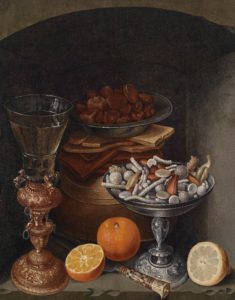
Still Life with Candy, Georg Flegel
Recipe Recreation:
Basic Sugar Paste
- 8 oz powdered sugar
- ½ oz gum tragacanth
- 4 tbsp rose water
- Wisk gum into rose water
- Allow to steep 12-24 hours
- Beat gum mixture in mortar
- Slowly incorporate sugar
- Grind in mortar until it becomes a paste, add extra rose water as needed (you may need to transfer it out of your mortar into a larger bowl you can use your pestle in)
- Press into molds or roll out like fondant
- Allow to dry
Alessio’s Sugar Paste
- 8-10 oz powdered sugar
- ½ oz gum tragacanth
- 4 tbsp rose water
- 1 tbsp lemon juice
- ½ egg white
- Wisk gum into rose water
- Allow to steep 12-24 hours
- Beat 2 tsp gum mixture in mortar
- Mix in lemon juice and egg white
- Beat well
- Slowly incorporate sugar and grind
- Remove from mortar and kneed until it becomes a paste
- Press into molds or form into objects
- Allow to dry
Note: as you’re adding in the powdered sugar it will feel like it is never going to come together until suddenly you have a pliable dough that is essentially fondant.
Options:
- Substitute coloured juice for rose water
- Substitute 1-2 cups flavoured sugar for sugar
- Kneed in cinnamon prior to forming
- Roll out several different colours of sugar paste and layer them, roll tightly then slice into disks
- Rolled out paste
- Draping the form
- cookie cutters work great for making quick ones, plus great shapes
- the spread
- closeup of the clove ones
- The final presentation
- And then we ate the plate
History of Ingredients:
Gum Tragacanth:
Gum tragacanth is a tasteless, odorless gum that dissolves in water and forms a gel (Ireland 2010). It’s modernly used in the creation of gum paste, tooth paste, and other gels. It is obtained from various species of Astralagus in the Middle East and was first identified in the west by Theophrastus in the third century BC (Beach 1954, 38); the plants mainly grow in what is present day Iran. It was well known throughout Europe by at least the 13th century (OED) and its dual name of both gum tragacanth and gum dragon likely stretches back to at least the 14th century with the word in Old English being Dragagantum leading into the Anglo-Norman word dragagant as compared to the Middle French word tragacante (OED). Although it was well known it seems to have been primarily used by scribes and physicians until it begins being used to make sugar paste which was likely before the writings of Alessio but I haven’t been able to trace its origin in culinary use before the 16th century.
Sugar:
Sugar, while expensive for the lower classes, was common for the gentry and nobility. In 1510 sugar was three pence per pound (Strong 1954, 59), which is a little less than one day’s pay for a labourer at the time (van Zanden 2001). By comparison it’s three times the cost of a 1.5 lb loaf of bread from that time (Best 2013). The equivalent loaf of bread today costs about three times the equivalent amount of sugar.
Sugar first appears in England in 1088 (Roufs and Roufs 2014, 114) and was a common ingredient in 16th century cookery books. It was used enough that the household of the Earl of Northumberland in the early 16th century purchased 2080 lb of sugar a year, more than three times all of the other spices purchased together (Brears 2008, 27).
Sugarcane began to be cultivated in New Guinea around 8000 B.C. (Aronson and Budhos 2010, 11) and was being used in religious ceremonies in India by 1000 B.C. The Persians first learned of sugarcane in 510 B.C. and the Greeks in 326 B.C. (Ibid 9). The earliest references to crystallized sugar show up around 300 B.C. (Smith 1839, 322) though it took until about 500 A.D. before true refining of sugar began (Mintz 1985, 23).
The Persians began growing and refining sugarcane around 600 A.D. (Rolph 1917, 120) and it spread rapidly throughout the Muslim world. Sometime before the 11th century the Egyptians had begun refining the sugar so that it was white (Aronson and Budhos 2010, 18), and they had begun making sugar sculptures by 990 A.D. (Abbott 2008, 17). Sugar was first introduced to Europe in Spain by the Moors in the eight century (Surface 1918, 17).
The Egyptian method, which went on to be the basis of most refining processes is to crush the cane and collect the juice, which was then boiled and strained several times. The juice was then poured into a mold from which the liquid could drain leaving only the crystallized sugar (Aronson and Budhos 2010, 18). The work was hot and unpleasant and the buildings it was done in were described as being like “going into the forges of Vulcan” (Abbott 2008, 19). There were many methods of whitening the sugar used from milk (Strong 1954, 59) to blood (Aykroyd 1967, 17), to lime and albumen (Rolph 1917, 122), and the final product was a loaf which was whiter at the top than the bottom (Abbott 2008, 20).
In 1108 a writer of the first crusade said:
“The crusaders found honey reeds in great quantity in the meadows of Tripoli, in Syria, which reeds were called Sucra. These they sucked, and were much pleased with the taste thereof, and could scarcely be satisfied with it. This plant is cultivated with great labour of the husbandman every year. At the time of harvest they bruise it when ripe in mortars, and set by the strained juice in vessels, until it is concreted in the form of snow or salt.” (Smith 1839, 322)
The Venetian sugar trade with India, Egypt, and Syria flourished from the 10th to the 12th centuries (Surface 1918, 19-20) and it was transported in four different ways:
- large loaves wrapped in sewn together palm leaves and then wrapped in canvas
- loaves placed in barels lined with cane leaves
- the biggest loaves were placed in chests and wrapped in canvas
- cubes were cut from loaves and packed in a chest
Europeans first began making sugar in 1166 in the Norman Kingdom of Sicily. (Ibid) and it spread rapidly with Henry III ordering three hundred pounds of sugar in 1243 (Aronson and Budhos 2010, 24). The bulk trading of sugar in England began in 1319 with Italian trader Nicoletto Basadona (Abbott 2008, 20) and the Portuguese began growing sugarcane on Madeira in 1419 (Galt 1853, 147) primarily using slave labour (Abbott 2008, 19). Later in the 15th century the Italians started refining their own sugar, making it much cheaper to obtain (Abbott 2008, 21). In 1503 the Venetians started using new way to refine sugar which made it cheaper still (Galt 1853, 147) and sugar produced in the New World was brought back to Spain as early as 1516 (Abbott 2008, 25).
Early in the 16th century Antwerp was the main refiner of sugar for Northern Europe, and by 1544 they were trying to refine sugar in London (Surface 1918, 23-24). By 1585 London had become a main refiner and major part of the sugar trade(24) spurred, in part, by better trade relations with the Ottoman Empire (Amatullah 2015).
By the end of the reign of Queen Elizabeth the wealthy English were eating so much sugar that it was visibly affecting them, primarily in their teeth: “the poor in England looked healthier than the rich, because they could not afford to indulge their penchant for sugar” (Mintz 1985, 134).
Conclusion:
Although there are several recipes for sugar paste in English they generally fall into two methods. Whether or not sugar paste was known of or used in England prior to the 1550s is unknown, but it seems to have been relatively common after then. What I’ve created is several shapes, types, and flavours of the two varieties of sugar paste. The Alessio version works well for forming objects and has a lighter rosewater flavour offset by the lemon flavour. The basic version is able to be rolled thinner and produces a more delicate plate and is easier to flavour such as with cinnamon. Unfortunately the yellow food colouring I made from marigolds didn’t colour the paste as much as I expected it to; I will be attempting a version with spinach juice soon and I’m hoping the colour saturation is better.
Result Pictures
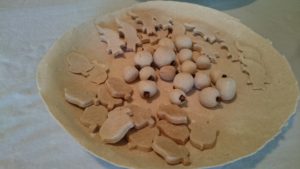
The final presentation and successful plate, see below for various versions.
- after mixing the gum and rosewater
- gum and rosewater a day later
- yep, that’s… gummy
- mixing in the first sugar
- it becomes a gel almost immediately
- after a while you need to transfer to a larger thing
- time to switch to kneading and rolling
- the forms, and my mistake. I didn’t cover them. I’ve found both cling wrap (easy) and olive oil and sugar (period) work for keeping it from sticking
- sugar paste rolled out
- trying out various objects
- the first generation of sweetmeats
- also available in balls
- Fully stuck and took forever to get off the form
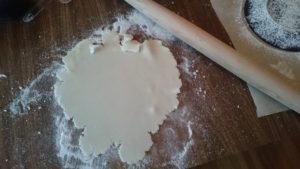
Sometimes you fail. This is what happens if your sugar isn’t fine enough
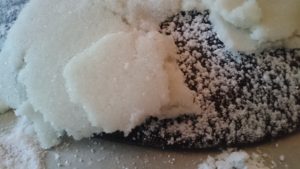
The horrible result of not grinding the sugar fine enough or using powdered sugar, but at least it didn’t stick.
Works Cited
A.W. A Book of Cookrye. London: Edward Allde, 1591.
Abbott, Elizabeth. Sugar: a Bittersweet History. Toronto: Penguin Books, 2008.
Alessio, Piemontese. The Secretes of the Reverende Mayster Alexis of Piemovnt. Translated by Wyllyam Warde. London: Henry Svtton, 1559.
—. The Secrets of the Reuerend Maister Alexis of Piemont. Edited by William Ward. London: Peter Short, 1595.
Amatullah, L. “Western Europe and the Ottoman Empire: Trade Across an Inverted Imperial Divide.” MuslimMatters.org. May 4, 2015. http://muslimmatters.org/2015/05/04/western-europe-ottoman-empire-trade-across-inverted-imperial-divide/ (accessed September 8, 2016).
Aronson, Marc, and Marina Budhos. Sugar Changed the World. New York: Clarion, 2010.
Aykroyd, W.R. The Story of Sugar. Chicago: Quadrangle Books, 1967.
Baret, John. An aluearie or triple dictionarie, in Englishe, Latin, and French. London: Henry Denham, 1574.
Beach, D. C. “History, Production, and Uses of Tragacanth.” In Natural Plant Hydrocolloids, 38-44. Washington: American Chemical Society, 1954.
Best, Michael. “The Elizabethan cost of living.” Internet Shakespeare Editions. University of Victoria. 2013. http://internetshakespeare.uvic.ca/Library/SLT/society/city%20life/cost.html (accessed August 22, 2016).
Brears, Peter. Cooking and Dining in Medieval England. Devon: Prospect Books, 2008.
Casteau, Lancelot de. Ouverture de Cuisine. Translated by Daniel Myers. Liège: Leonard Streel, 1604.
Dawson, Thomas. The second part of the good hus-wiues iewell. London: E. Allde, 1597.
Fantes Kitchen Shop. “Classic Icing Recipes.” Toque Tips. 2015. https://toquetips.fantes.com/icing-recipes/ (accessed August 10, 2016).
Galt, John. “History of Sugar.” The Illustrated Magazine of Art, 1853: 147.
Hertford, Katherine Seymour. The commonplace book of Countess Katherine Seymour Hertford. Edited by Daniel Myers. 1567.
Holloway, Johnna H., ed. A Closet for Ladies and Gentlewomen. London: F. Kingston, 1608.
Ireland, Robert, ed. A Dictionary of Dentistry. Oxford: Oxford University Press, 2010.
Mintz, Sidney W. Sweetness and Power. New York: Elisabeth Sifton Books, 1985.
Rolph, George M. Something About Sugar: its History Growth, Manufacture and Distribution. San Francisco: John J. Newbegin Publisher, 1917.
Roufs, Timothy G., and Kathleen Smyth Roufs. Sweet Treats around the World: An Encyclopedia of Food and Culture. Santa Barbara: ABC-CLIO, 2014.
Smith, Robert. “History of Sugar.” The Friend; a Religious and Literary Journal (1827-1906), 1839: 322-323.
Strong, L.A.G. The Story of Sugar. London: George Weudenfield and Nicholson, 1954.
Surface, G.T. The Story of Sugar. New York: Appleton, 1918.
V.a.19 Folger Shakespeare Library (MS ADD 107). 17th C.
van Zanden, Jan Luiten. “Wages and the cost of living in Southern England (London) 1450-1700.” International Institute of Social History. 2001.
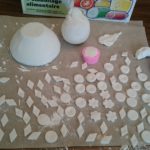
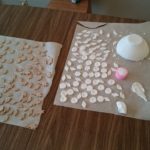
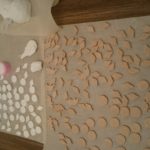
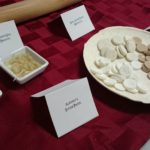
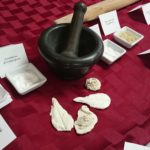
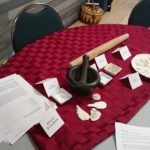
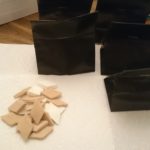
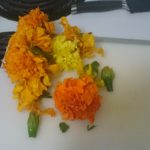
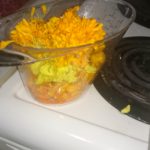
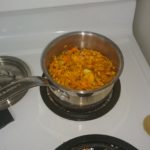

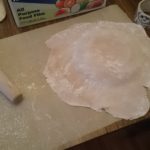
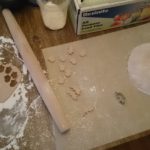
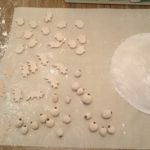
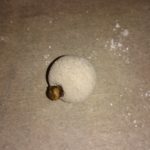
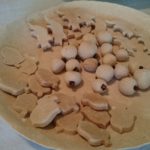
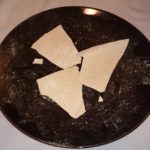

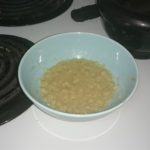
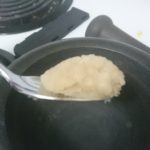
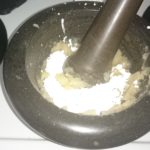
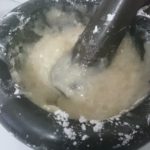
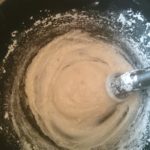
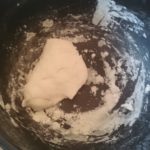
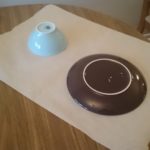
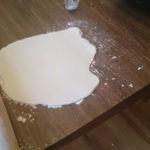
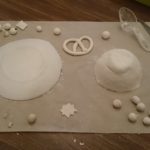
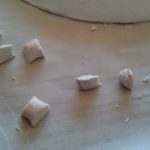

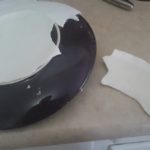
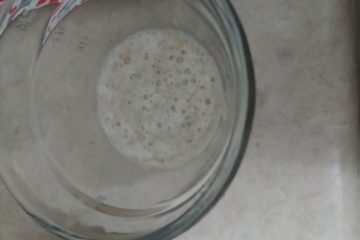
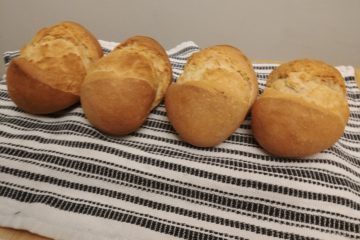
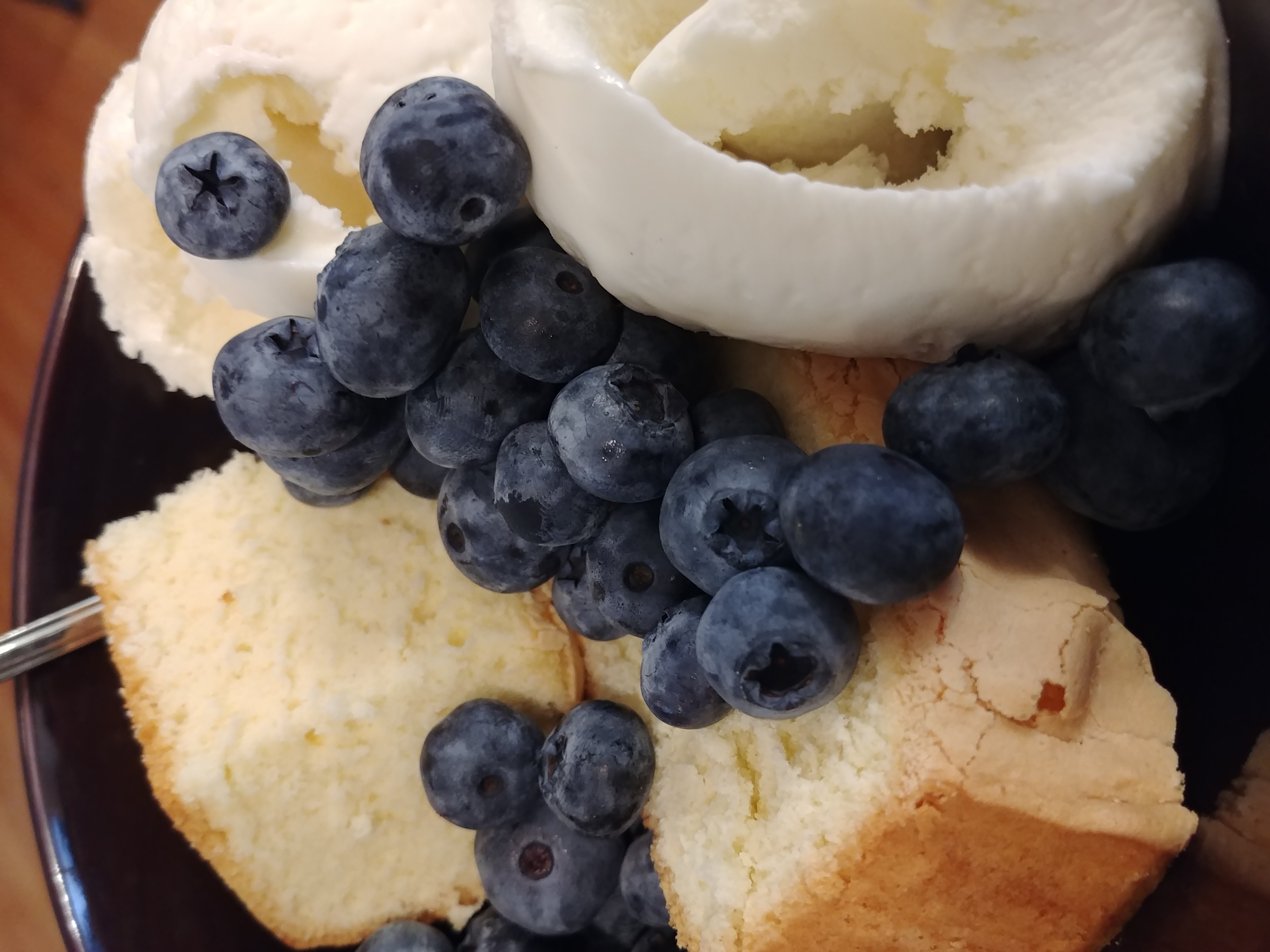
6 Comments
Jackie Wyatt · November 8, 2016 at 10:00 am
Hello. I was wondering if you tried doing both the basic recipe and Alessio’s? If you did, was there a difference? I’ve only ever done the more common version with the lemon and egg.
Tomas deCourcy · November 8, 2016 at 10:07 am
Hi, I actually started with the basic version. It rolls out a bit thinner than the Alessio version and I found that it works great for making plates, though the Alessio version worked better for use with moulds. The down side is that it takes more tragacanth which makes it a bit more expensive.
English Sugar Paste (short) – Tomas de Courcy · November 7, 2016 at 8:39 am
[…] Now considering that that is virtually impossible for me I did a long form which you can find here, and a short form. Which is this […]
White Ginger Bread – Tomas de Courcy · February 15, 2017 at 5:48 pm
[…] some treats for a meeting at an SCA event and asked me to contribute. Ever since I did the Sugar Paste work I’ve been wanting to try some of the more advanced versions. One of the ones I’ve […]
Sugar Cane Fun – Tomas de Courcy · March 9, 2017 at 8:46 am
[…] a lot of what I’ve done with sugar cane over the last while. This actually predates the sugar paste experiments. So here’s a huge update heavy on the photos. (Also a shameless test of the new […]
Renaissance Mouthwash – Tomas de Courcy · August 30, 2018 at 9:20 am
[…] referenced Alessio’s work back in my post on Sugar paste. While I was doing that research I also came across a potion “Agaynst the stynkyng of the […]
Comments are closed.